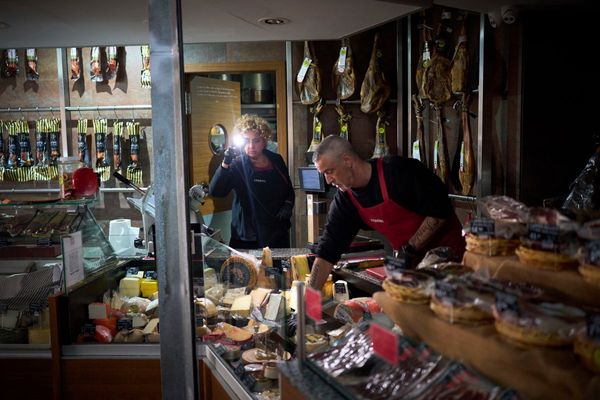Colorado’s medical marijuana sales sit at their grimmest point, leaving the state’s cannabis industry “on the brink,” according to representatives of the sector.
In July, the state’s marijuana sales for both recreational and medical hit almost $154 million, according to Colorado Department of Revenue figures. This calendar year, total sales have reached more than $1 billion so far.
However, July’s medical marijuana sales only reached a little more than $18 million — the lowest monthly number ever recorded since January 2014, when retail sales were legalized in the state.
“There is a dangerous perception that Colorado’s cannabis industry is a cash cow,” said Tiffany Goldman, board chair of the Marijuana Industry Group. “This perception is false.”
Recreational marijuana sales fared better at more than $135 million, which is a jump from the numbers in April, May and June. Still, that’s significantly lower than last July at almost $168 million.
The industry directly employs more than 41,000 people in the Centennial State, but Goldman pointed to small cannabis businesses shuttering. Buddy Boy Brands’ seven metro-area dispensaries locked their doors permanently in June, with owner John Fritzel blaming “a tax balance,” a market downturn and high costs.
“In the future, we hope lawmakers and elected leaders will understand the sad reality that Colorado cannabis businesses are struggling and that we must work to protect an industry that provides good paying jobs and tax revenue for our state,” Goldman said in a statement.
However, other chains are expanding, such as LivWell Enlightened Health. It’s set to dominate the Colorado market with 26 dispensaries after PharmaCann recently announced its plan to acquire boutique dispensary chain The Clinic.
Ryan Shipp, director of retail at independently-owned Native Roots Cannabis Co., doesn’t agree that the state’s cannabis industry is on the brink overall, calling medical and recreational “two different markets completely.”
While both are trending downward, it’s for varying reasons, he said. On the recreational side, more states are legalizing, so cannabis tourism is dropping.
On the medical side, “we expected a decline” in sales, he said, pointing to House Bill 1317 as a contributing factor. The measure imposed more requirements on medical marijuana patients and curbed the amount of concentrate that a patient can buy in one day to eight grams. For 18- to 20-year-olds, the limit became two grams.
“I don’t know if we expected this large of a decline,” Shipp added in a phone interview. “It’s a little bit more a hassle to actually obtain a medical card now than what it used to be, so some of them are just opting to not have to go through that process and just shop on the rec side.”
He notes that Native Roots has seen steady increases in medical patients over the past couple months, though, and describes himself as hopeful that the sales slump has “flatlined.” The company is committed to growing its medical side, Shipp added.
Still, he doesn’t expect the medical market to bounce back to its apex.
However, not all hope is lost for Colorado’s cannabis industry, which breathed a sigh of relief last week when a ballot measure aiming to boost cannabis taxes within the Mile High City was pulled.
On a broader scale, both the U.S. and global cannabis sales are on track for growth into the future, according to a rolling market forecast by cannabis data company BDSA.
In 2026, annual cannabis sales worldwide are estimated to jump to $57 billion from $30 billion last year, with the U.S. market surging to $42 billion from $25 billion in 2021.
By the end of this year, the nation’s legal cannabis sales is projected to hit $27 billion — a 7% boost over last year’s sales, according to the data released Tuesday.
However, BDSA highlights that “the most dramatic sales declines” will likely be seen in mature adult-use markets, such as Colorado, with newer markets instead spurring sales. It notes the trend of falling medical marijuana sales, as “patients have access to increasing variety and lower prices in neighboring adult-use markets.”
“The ‘hockey stick’ trend of sales growth seen in the early years of legal cannabis has passed, and economic and regulatory headwinds are exerting pressure on legal cannabis markets,” said Roy Bingham, CEO of BDSA. “Though mature legal cannabis markets in the U.S. saw sales soften in 2022, the cannabis market is still forecast to see topline growth in 2022, driven by strong sales in new and emerging markets, such as the populous states of New Jersey and New York.”







